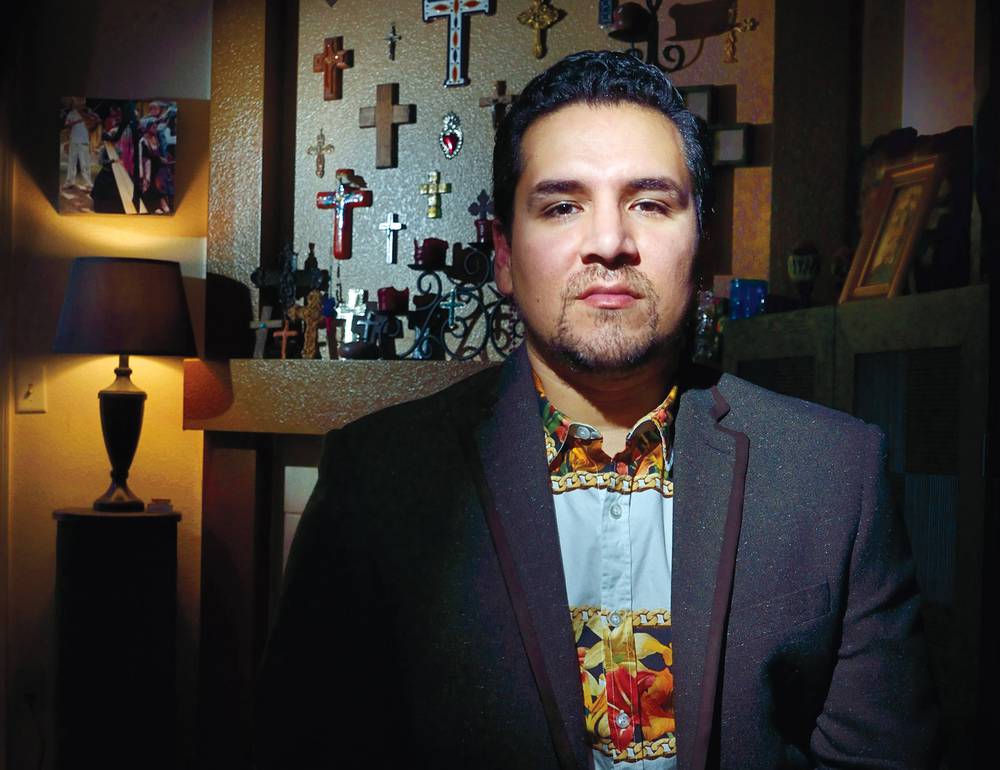When Emmanuel Ortega curated an exhibit of 19th- and 20th-century Mexican devotional paintings at the Barrick Museum last year, the personal testaments culled from private collections were a rare treat for Las Vegas audiences. The UNLV art history teacher gave tours in Spanish and English, eager to share the show with as much of the community as possible.
After that he curated a touring collection of 19th-century satirical political cartoons at the Mexican Consulate. And now Ortega has joined forces with others cultivating more events focused on Mexican art, including a juried exhibit this summer that will feature local artists.
As he pursues a doctorate in Ibero-American colonial art history from the University of New Mexico, Ortega’s expertise has already gained him accolades from peers and members of the art community. We talked about his interest in Mexican art history and new projects, including two exhibits he’s curating at Museo de Arte Religioso Ex Convento de Santa Mónica in Puebla, Mexico.
What prompted the formation of a cultural group here? We concluded that there are a lot of things for Latinos to do in terms of popular culture, but in terms of more intellectual things to do, there’s really not a lot. My main interest is to push local artistic talent. I want to have a space for Mexican and Chicano artists to exhibit because most contemporary art shows that I’ve see in town, there’s really not a lot of diversity.
In addition to baroque art, you’re teaching a course on Mexican art history, which is something I’ve heard artists say they wished they’d had when they were at UNLV. This is why I want to stay here. We’re part of the Southwest and, as such, this should be part of the curriculum. This was Mexico. The history of Mexico is in a way our history, but we don’t know anything about it. There are kids who are interested, and there is a need for that. The kids at UNLV who take my class, that might be the only class where they learn about Latin American culture.
Why does the word “folk” often precede Mexican art? It’s a big problem. It’s a hierarchy that was born in the 19th century and even in art history of Mexico that’s been a problem, because anything that’s not European enough becomes popular art. It becomes folk art, and that’s what sells because that’s what the tourists want to see. Tourists want to see color. Tourists want to see Frida Kahlo with a monkey on her shoulder. ... “Popular,” “folk,” all those words I try not to use in the class. I’m interested in the context of things.
Are your students surprised by the breadth of Mexican art? I seduce my students for class by making posters for my class with Frida Kahlo. We talk about Frida Kahlo for like a day. And when I show some of the 18th-century baroque missions people have no idea they exist. I had no idea they existed several years ago.
What are the exhibits you’re curating in Puebla? They wanted me to choose pieces from the collection and put them in some dialogue together. I chose a series of 18th-century landscape paintings from Puebla. There’s a Flemish tradition, so I’m talking about that. And then I’m going to do a series of martyr paintings. I’ve always been interested in images of violence in the Colonial Period. For my master’s thesis, I did images of the Inquisition in Mexico. But in the New Mexico History Museum in Santa Fe, I found an image of Franciscan martyrs from the 18th century, and I went from there.
What interests you in those representations of violence? By the time I started graduate school, the violence in my hometown, Juárez, was out of control. Images of violence started to circulate heavily in Juárez. I started seeing the images of beheaded people in newspapers. They became an everyday event, and I wanted to make sense of that. I’d been studying colonial art, so I decided to go to the root of the source. I ultimately wanted to make the connection between the colonial and the contemporary period, but that’s impossible. It’s two different contexts. But that’s what started it off because it is part of Mexican visual culture.
Were you ever able to make sense of it? I don’t think there’s an explanation for human brutality, but you can put things in a context and begin a dialogue, which is the least I can do.








